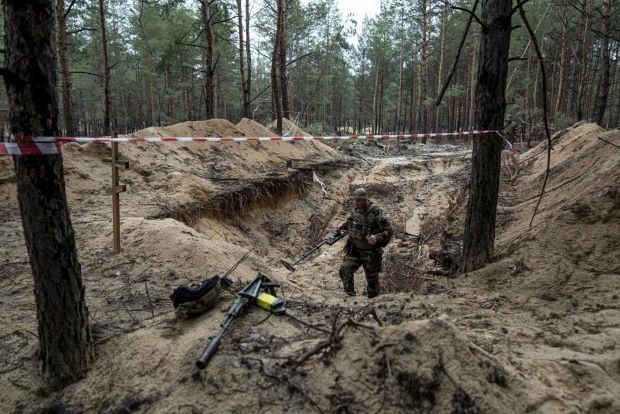Grave site with more than 400 bodies found in Izium, Ukraine says
By Andrew E. Kramer and Marc Santora
IZIUM— A mass grave site uncovered in the city of Izium in northeastern Ukraine could hold the bodies of more than 400 people who died during the six months of Russian occupation, Ukrainian officials say.
Two days after President Volodymyr Zelenskyy raised a flag over the newly reclaimed city, teams of war crimes investigators and prosecutors were dispatched to the site, in sandy soil in a pine forest, on Friday (16). Police vehicles surrounded the site.
Several burial sites were found, the largest of which has 440 unmarked graves, the Ukrainian Ministry of Defence said on Twitter on Thursday (15).
Russian forces took control of the city in late March after a three-week siege, turning it into a military stronghold and staging ground for its assault on eastern Ukraine. They fled in disarray last weekend as Ukrainian forces routed the Russians across the northeast and reclaimed thousands of square miles of terrain.
If it is confirmed that hundreds were killed by Russian forces, it would be the largest such mass grave to be uncovered in the seven-month-long war. The head of the National Police, Ihor Klymenko, said law enforcement agencies have opened 204 criminal proceedings over the past week related to war crimes committed by Russian forces. Speaking at a news conference Friday, he said investigators are examining 10 locations in the Kharkiv region where Russians are suspected of torturing Ukrainians.
Local officials estimate that during the Russian occupation, as many as 1,000 people died in Izium, many from a lack of medicine and medical care under Russian occupation. Izium had a pre-war population of some 40,000, although an estimated 10,000 residents remained during the fighting.
The identities of those buried and the causes of death remain unknown.
Zelenskyy said that while a pattern of Russian atrocities in occupied territories had been clearly established, the investigations in Izium and other parts of Kharkiv were in their early days.
“We want the world to know what is really happening and what the Russian occupation has led to,” Zelenskyy said Thursday night. The government organized a trip for international journalists and independent investigators to the site Friday so they could provide “clear, verified information.”
Bringing those responsible to justice will be a daunting task. It will likely be even more challenging in the northeast than in the investigations in towns and suburbs north of Kyiv. Russian soldiers had about six months to destroy evidence during the occupation, while in the suburb of Bucha, northwest of Kyiv, Russian forces left bodies lying on streets when they made a chaotic retreat.
Multiple Russian military units and a disorderly mix of mercenaries and military police units rotated through towns and villages during the occupation. Some were more brutal than others, said Ihor Levchenko, a resident of Balakliya who before the war directed a soccer fan club in the city southeast of Kharkiv.
Bodies were lying on the streets in the first days after the Russian invasion but were soon cleared.
“I only saw bodies at the beginning,” he said.
-New York Times



Comments are closed, but trackbacks and pingbacks are open.